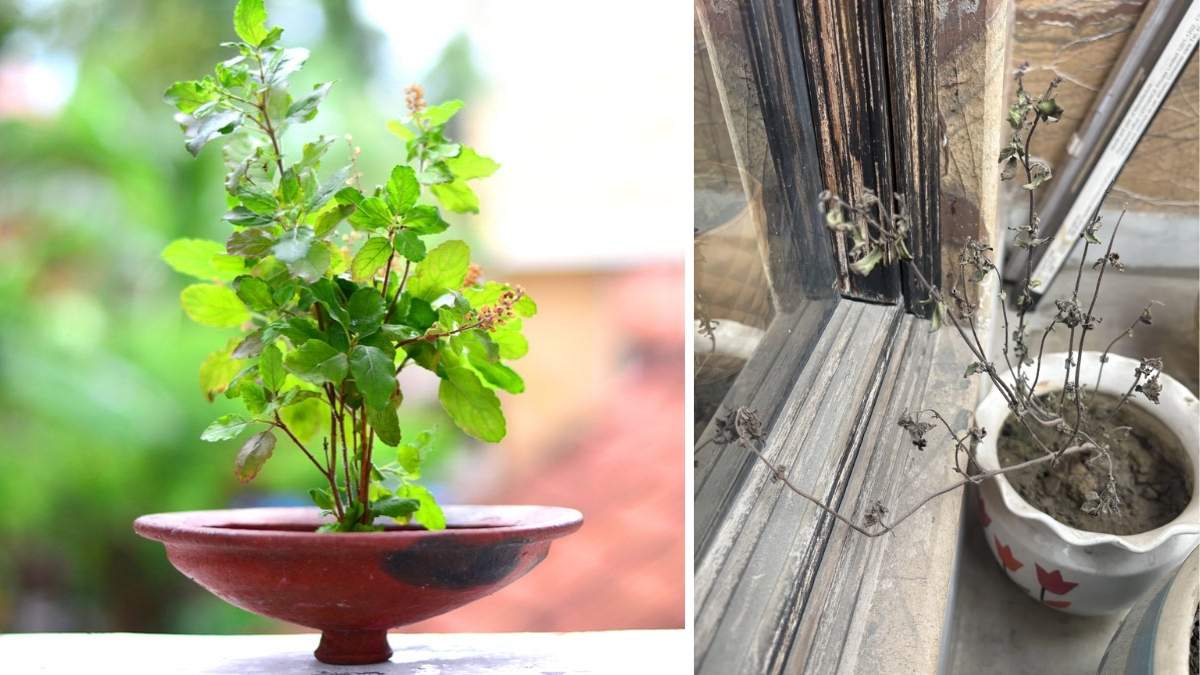Tulsi, also known as Holy Basil, holds a special place in many homes for its spiritual and medicinal value. It is believed to bring positive energy and has countless health benefits. But sometimes, despite our love and care, the Tulsi plant starts to wither or lose its strength. If your Tulsi plant is dying, don’t lose hope. With the right attention, you can bring it back to life. Let’s look at simple and effective ways to care for your Tulsi plant and help it thrive again.
Understand Why Your Tulsi Plant Is Dying

The first step in saving your Tulsi is to understand what is going wrong. A dying Tulsi plant can show several signs, such as yellowing leaves, drooping stems, or slow growth. These signs usually appear because of one or more of the following reasons:
- Overwatering or underwatering
- Poor sunlight exposure
- Fungal or pest attack
- Nutrient deficiency
- Wrong soil type or pot condition
By identifying the main problem, you can choose the right method to help your plant recover.
Check the Watering Routine
Tulsi is a delicate plant that needs balanced watering. Too much or too little water can both harm it. Overwatering leads to root rot, while underwatering makes the leaves dry and wilt. To maintain the right balance, water the Tulsi plant once daily during summer and every alternate day during winter. The soil should feel moist but not soggy.
If you notice that the soil is constantly wet, reduce watering and allow it to dry a little. On the other hand, if the soil looks cracked or very dry, increase the frequency slightly. Always water the plant early in the morning or in the evening to prevent water evaporation and shock from heat.
Provide Enough Sunlight
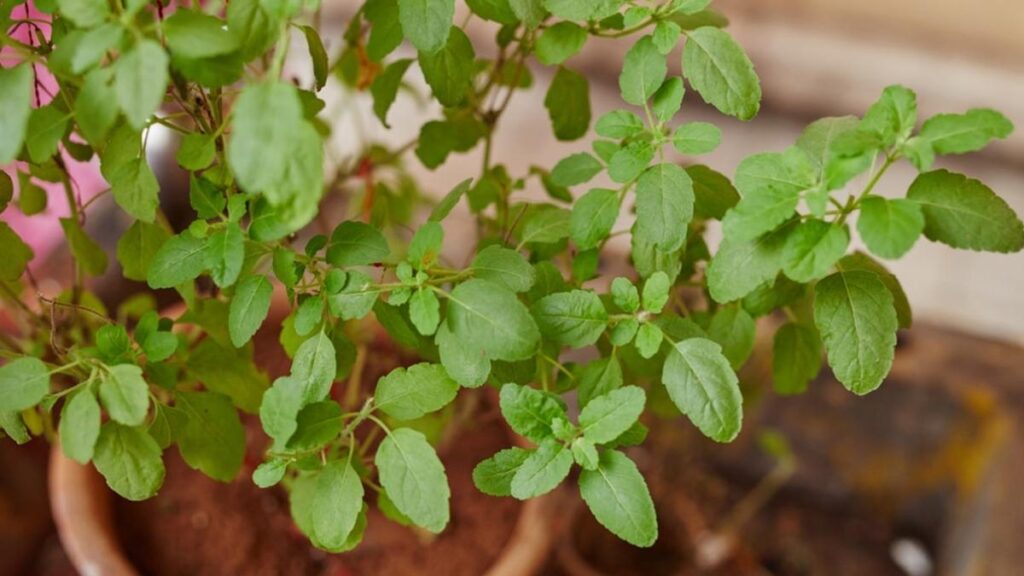
Tulsi loves sunlight and grows best when it gets at least five to six hours of direct sunlight each day. Lack of sunlight can cause the plant to become weak and lose its natural green color. If your Tulsi plant is indoors, place it near a window where sunlight reaches easily.
During rainy or cloudy days, when natural sunlight is limited, move the pot to a brighter place or use artificial grow lights for a few hours. Just make sure the light is not too harsh, as too much heat can burn the leaves.
Use the Right Soil and Pot
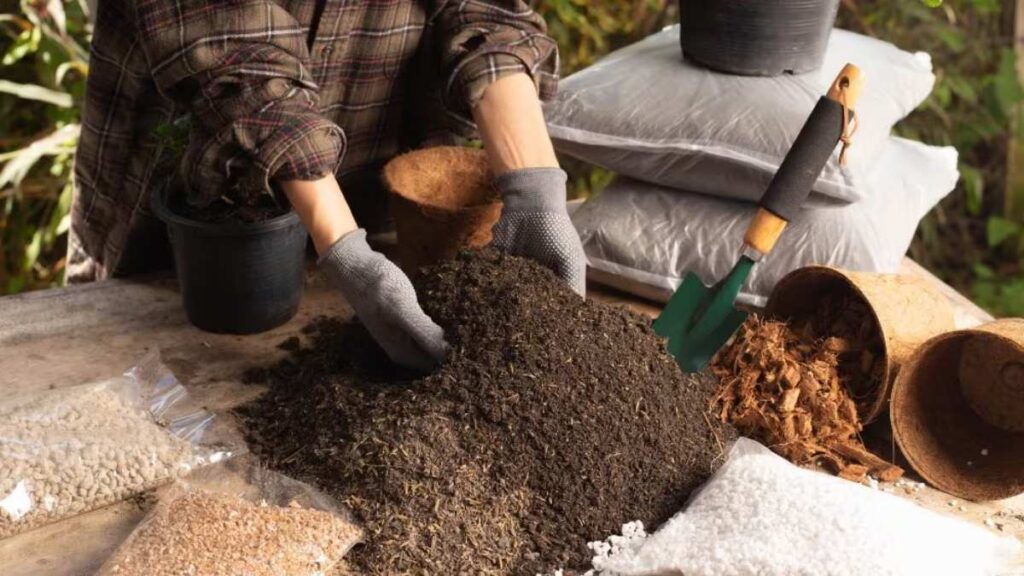
Soil plays a big role in the health of your Tulsi plant. The plant grows well in light, well-draining soil that allows air circulation around the roots. If the soil becomes too compact, water cannot drain properly, leading to fungal growth. A mixture of garden soil, sand, and compost works best.
Also, make sure your pot has proper drainage holes at the bottom. A clay or terracotta pot is ideal because it helps the soil breathe. If you notice that water stays in the pot for too long, re-pot your Tulsi into a better draining pot. This simple step can make a huge difference in its recovery.
Feed Your Tulsi Plant Naturally
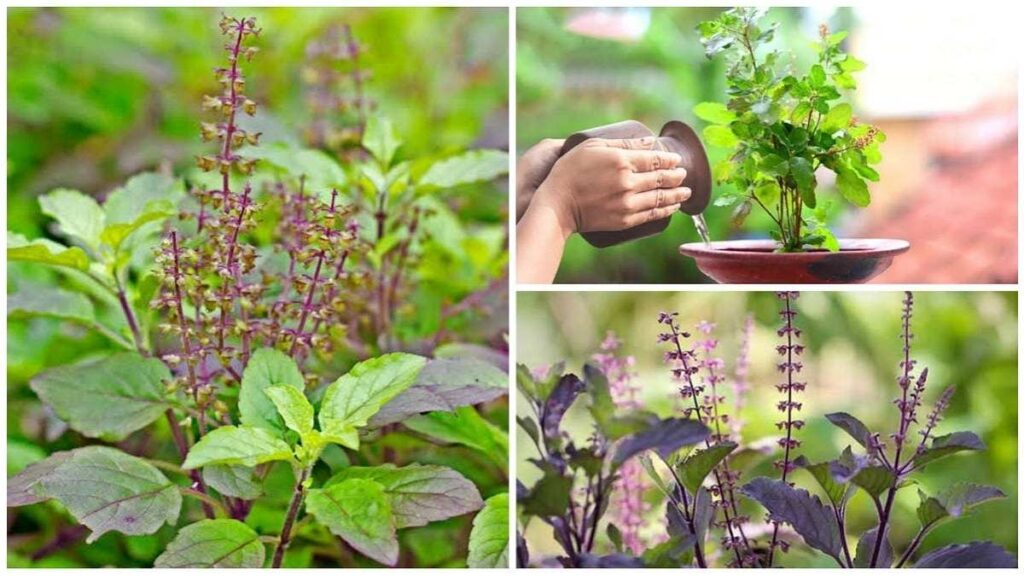
Like every living being, your Tulsi plant also needs proper nutrition to stay healthy. Organic compost or cow dung manure works wonders for Tulsi. You can add a small amount of compost to the soil once every fifteen days. Avoid using chemical fertilizers as they can harm the roots and reduce the plant’s healing properties.
If your plant looks weak or pale, you can make a natural fertilizer at home by soaking banana peels or vegetable scraps in water for a few days. Strain the liquid and use it once a week to boost the plant’s growth.
Protect from Pests and Fungal Infection
Pests such as aphids, whiteflies, or spider mites can attack the Tulsi plant, sucking its sap and making it weak. Fungal infections often appear when the plant remains wet for long periods. To prevent this, keep the leaves dry and make sure air circulates freely around the plant.
If you notice any pests, wipe the leaves gently with a soft cloth dipped in neem oil solution or spray the plant with a mild mixture of neem oil and water. Neem oil is natural and safe, helping your plant recover without using harmful chemicals.
Prune Regularly for Healthy Growth
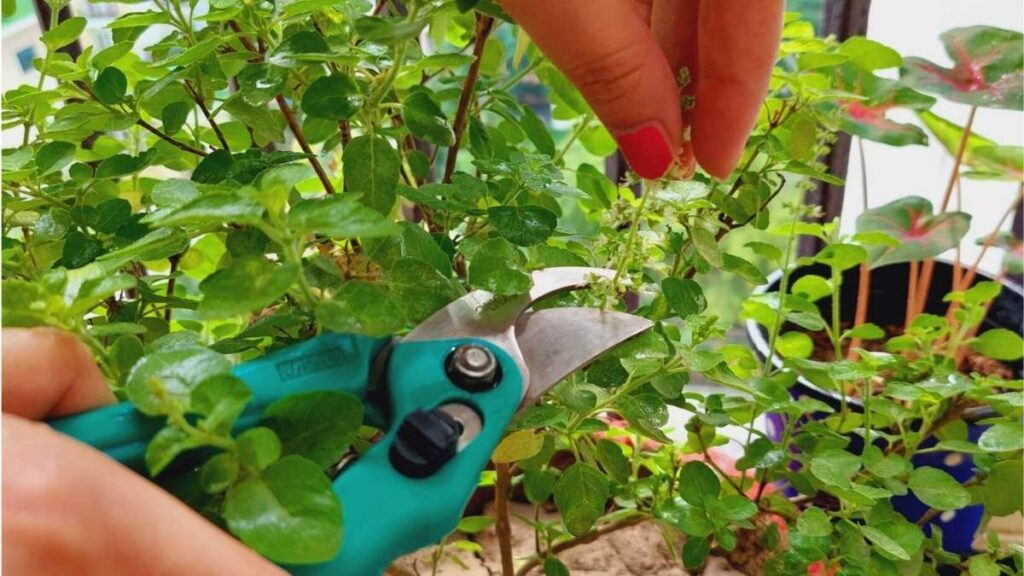
Pruning is an important part of Tulsi care. Regularly cutting the top leaves encourages new branches to grow and keeps the plant bushy. Remove any dried or yellow leaves to prevent the spread of disease. It’s best to prune the plant every two to three weeks using clean scissors or garden shears.
If your plant has grown too tall and thin, trim it down slightly to promote side growth. Pruning also improves air circulation and allows sunlight to reach all parts of the plant.
Maintain the Right Temperature
Tulsi thrives in warm and humid weather. Extreme cold or hot temperatures can stress the plant and slow its growth. During winter, keep the plant indoors near a window where it can get sunlight but stay protected from cold winds. During summer, avoid keeping the plant directly under the harsh afternoon sun. Instead, place it where it gets morning sunlight and shade in the afternoon.
Show Consistent Care and Patience
A dying Tulsi plant doesn’t recover overnight. It needs your consistent care and patience. Check it every day, observe the changes, and adjust your routine as needed. Talk to your plant, keep its surroundings clean, and avoid moving it too often. Plants are sensitive to change, and a stable environment helps them heal faster.
Conclusion
Caring for a dying Tulsi plant is all about understanding its needs and showing gentle attention. By giving it proper water, sunlight, soil, and natural nourishment, you can bring it back to life. Tulsi is a strong and sacred plant that responds beautifully when cared for with love and patience. Once it regains its strength, it will continue to bless your home with freshness, positive energy, and spiritual peace.
Even a struggling Tulsi plant can bloom again if you give it the right care at the right time. So, stay hopeful, follow these simple steps, and watch your Tulsi plant come back to life stronger than before.

